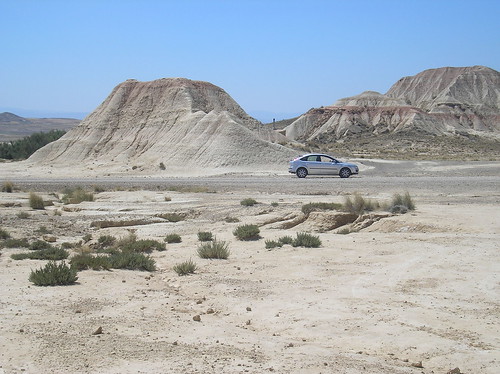(Source: Detroit News via Autoblog & Bloomberg)

Image Courtesy: Apture - Ford Focus
The National Highway Traffic Safety Administration has processed 80,500 transactions so far, and the early winner of Cash For Clunkers appears to be the Ford Focus. The Detroit News is reporting that the Focus is the number one vehicle purchased under the government program, showing us why Ford’s C-Segment vehicle gained 43.6% in July. Ford also saw an amazing 97% increase in Escape sales in July, a tally that was likely improved with the help of Cash For Clunkers.
The controversial and somewhat clumsy program is drawing plenty of attention for its popularity amongst car buyers, and Detroit automakers appear to be taking more than their fair share of sales.
The White House says 47% of all vehicles sold through the bill so far come from US automakers; 2% higher than the domestics’ 45% overall share. Four of the top 10 vehicles purchased under the program come from domestic automakers, and over half of all vehicles were built in the States.
This wildly popular program is currently all but spent and is awaiting the Senate nod for a further $2Billion cash infusion to keep it going. On Friday, the House approved the $2 billion increase. The Senate is expected to vote Wednesday or Thursday; the White House is pressing it to act. Transportation Secretary Ray LaHood told MSNBC that the program has been a “lifeline to the economy.”
To drum up support for more dollars, the White House is touting the program’s value. White House spokesman Robert Gibbs says the average fuel economy increase so far is 9.4 mpg; a 61% increase verses the vehicles destined for a sodium silicate bath. So far, 83% of the vehicles traded in have been trucks, while 60% of the vehicles purchased under the program have been cars. The White House estimates that Cash For Clunkers will save the average car buyer $700 – $1,000 in gas prices during the life of the vehicle.
The sales last month from the federal incentives may result in fewer buyers later this year after the program ends, George Pipas, Ford’s sales analyst, told CNBC today.
A similar program in Germany won’t sustain sales growth into 2010 as those incentives expire, said Matthias Wissmann, president of the German carmakers, today at a Frankfurt news conference. Germany’s car market expanded by 26 percent from a year earlier in the first half, propelled by increases of at least 40 percent in May and June.
Our favorite auto website, Jalopnik, offers a comprehensive list of the top 10 vehicles sold and trade-ins) dealt under this CARS program.
The Ten Most Traded-In Vehicles (vehicle’s EPA mileage)
1. 1998 Ford Explorer (14-17 mpg)
2. 1997 Ford Explorer (14-18 mpg)
3. 1996 Ford Explorer (14-18 mpg)
4. 1999 Ford Explorer (14-18 mpg)
5. Jeep Grand Cherokee
6. Jeep Cherokee
7. 1995 Ford Explorer (15-18 mpg)
8. 1994 Ford Explorer (15-18 mpg)
9. 1997 Ford Windstar (18 mpg)
10. 1999 Dodge Caravan (16-18 mpg)
The Ten Most Purchased Vehicles (vehicle’s EPA mileage)
1. Ford Focus (27-28 mpg)
2. Honda Civic (24-42 mpg)
3. Toyota Corolla (25-30 mpg)
4. Toyota Prius (46 mpg)
5. Ford Escape (20-32 mpg)
6. Toyota Camry (23-34 mpg)
7. Dodge Caliber (22-27 mpg)
8. Hyundai Elantra (26-28 mpg)
9. Honda Fit (29-31 mpg)
10. Chevy Cobalt (25-30 mpg
Click here to read the entire article.






